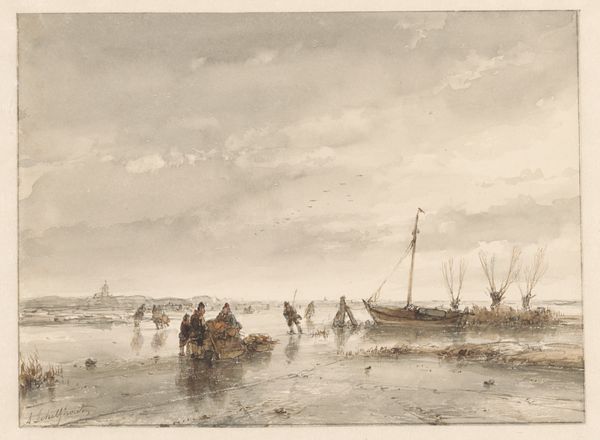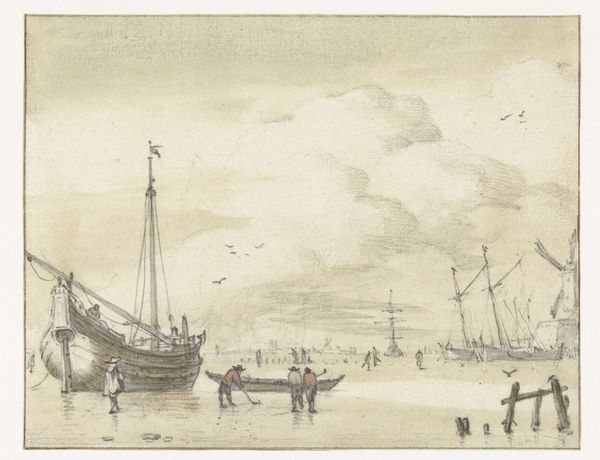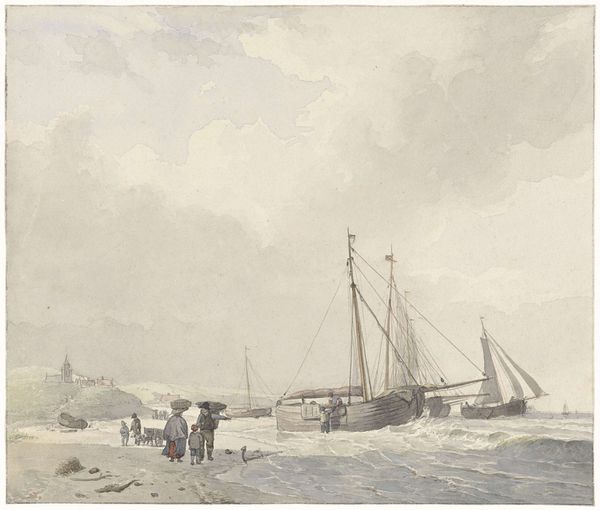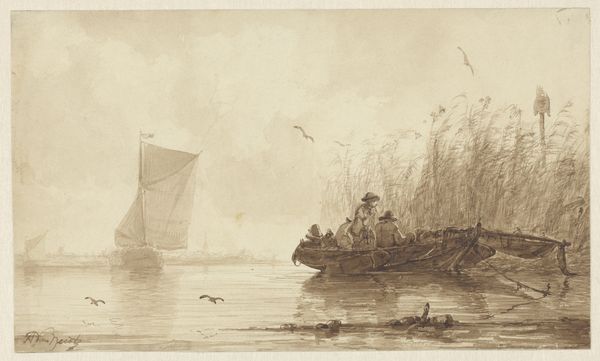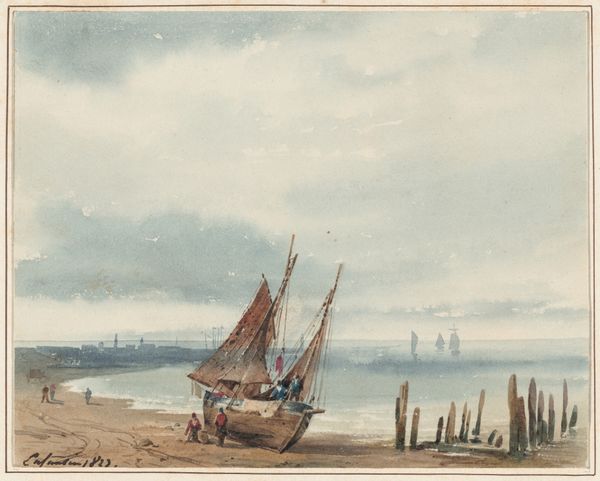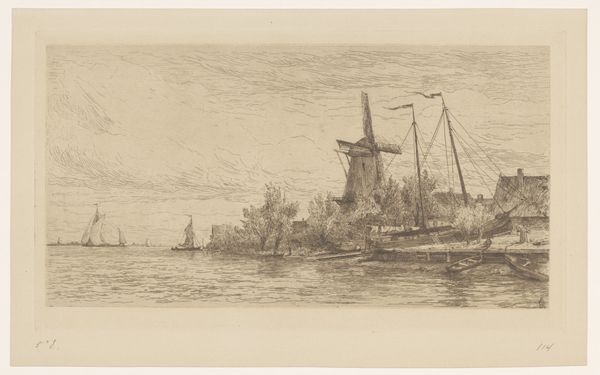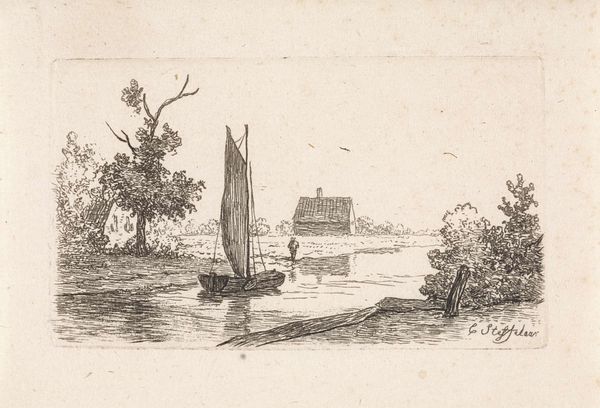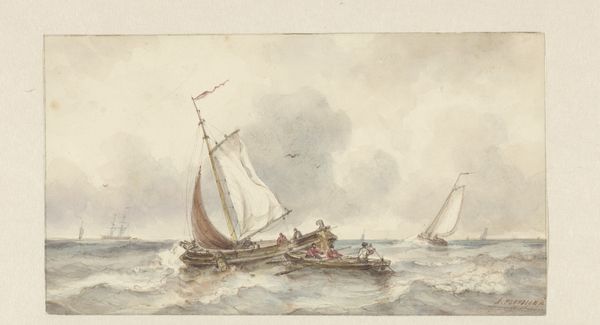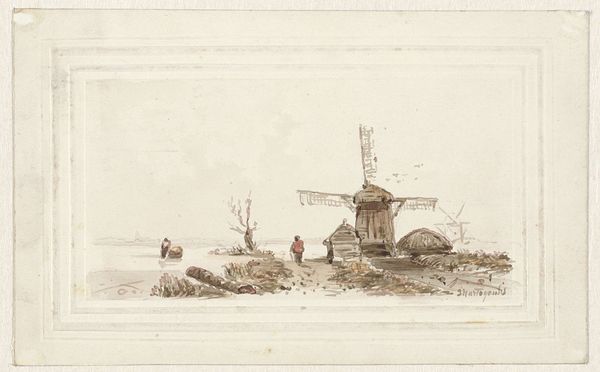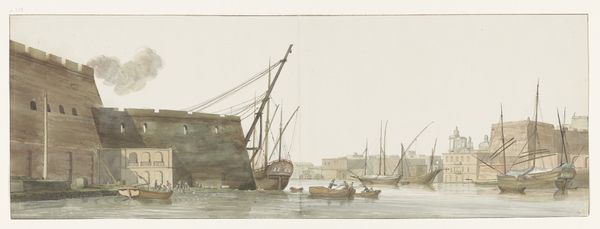
Dimensions: height 122 mm, width 192 mm
Copyright: Rijks Museum: Open Domain
Curator: What a serene winter scene! This is "Winterlandschap met boerderij aan sloot," or "Winter Landscape with Farm by a Ditch," created in 1852 by Johannes Franciscus Hoppenbrouwers. It’s a delicate plein-air work, primarily executed in watercolor and graphite. Editor: My initial feeling? Quiet resignation. The palette is subdued, almost monochromatic, like looking at the world through frosted glass. The slouching figures only heighten the melancholic mood, and look as though they were made out of snow themselves. Curator: It’s remarkable how Hoppenbrouwers captured the bleakness, isn't it? The use of watercolor lends itself well to the damp chill. Consider the choices, though; graphite underdrawing for structure, followed by layers of watercolor, built up to give substance and muted tone. Notice, also, how the artist handles the reflections on the partially frozen ditch to enhance realism, and how the texture almost urges the viewer to touch the frozen surface! Editor: True! And the composition draws me in with those diagonals. My eyes dance from the figures by the canal toward that solitary person perched on the bank, with the farmhouse almost emerging from the muted sky behind them! All these elements speak of the isolation inherent to rural winter life. One can almost feel a personal connection to the scene, like stumbling upon a collective memory or forgotten family photo. Curator: The Romantic movement valued emotional impact above all else. The daily life and struggles of country life often replaced more bombastic imagery as well. Hoppenbrouwers, making his artwork en plein-air, likely intended the picture for private collectors who may or may not have lived through what's illustrated, as the artwork’s small dimensions give one reason to feel so. Editor: That’s true—the work invites introspection, doesn't it? It suggests a sort of longing or dream state—perhaps even a memory being painted in hues of regret, maybe a reflection of mortality using ice. It makes me wonder about the artist’s mind in that moment—how he processed nature, society, and, eventually, death! Curator: Yes, "Winterlandschap met boerderij aan sloot" offers not only an atmospheric depiction of the season, but also gives a lens to view Romanticism as a reflection upon an expanding material and industrial base within which these people are shown. Editor: Thank you. Thinking of it now, seeing nature reflected like that has deepened my view on what Hoppenbrouwers did there.
Comments
No comments
Be the first to comment and join the conversation on the ultimate creative platform.
